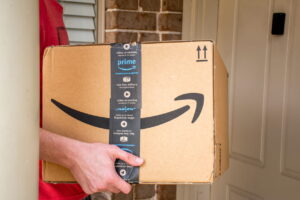Email has proved its worth as one of the most valuable channels to approach your customers. Its prime advantages are:
-
- You can use it for every stage in your customer journey
- You have full control over the data you collect
In this article, we share our step-by-step guide to setting up your omnichannel email marketing strategy.
1. Start with the basics
You can’t work on optimizing your email revenue and customer engagement without a solid foundation. You may want to begin by setting short-term goals and objectives, for example ‘send out 1 email every week’ or ‘grow the database by 5% every two months’.
These goals may need modifying at a later date, especially as you are working ad hoc at this stage, without the use of integrated tools or specific reporting, but they are a good place to start.
Set-up basic automation
Before you send out your first automated email, set up templates that you can use to make your emails recognizable to your database.
Next, create the basic framework of your omnichannel set-up; integrate store contacts in your database and make sure you are able to distinguish between the different types of customer.
Start with the basic automation emails, such as an abandoned cart flow and a welcome email flow.
Carry out A/B tests to find out which times of day and which days of the week your emails achieve the highest conversion rate.
2. personalize, personalize, personalize
Decide on your KPI’s
Now that you’ve gathered some data, it’s time to establish your email KPIs. What is your average open rate per type of email and how are you going to improve it?
Set up your goals and objectives for the next year and make them actionable. What tools do you need to help you reach these objectives? Ensure that you have a basic data overview and reporting in place so you can track your progress.
Optimize and personalize your emails
Once you have data available for the automated emails you have set up, you can use this information to optimise your auto email flows.
Based on the results of your A/B tests you can tweak the timings of your communications. You can then establish new A/B tests and set up different versions of the same automation mail, personalizing it for every type of subscriber.
Now that you have done the basic groundwork on your email automation, you can work on more advanced flows. Consider introducing a post-purchase email series to stimulate repeat purchases, a reactivation flow and browse abandonment email.
Experiment and learn from setting up omnichannel email flows by transferring audiences to other channels. The more personalized your emails are the better your revenue and the greater your database engagement.
3. Scalable, strategic engagement
Multi BU objectives & scalable processes
With your email reporting and progress follow-up is in place, it’s time to think about what more you can do. List the ways in which email can contribute to other areas of the business and set up aligned, multi-year and cross-business objectives.
If you have these, you can use them to guide your processes. Once you have global KPI benchmarking and comparison in place, you know you are truly using email as an omnichannel tool.
Behavioral & smart segmentation
The better you know your subscribers, the more you can apply highly relevant behavioral and smart segmentation. At this stage, you should have actioned an eCRM lifecycle automation plan that targets customers with appropriate communications at every stage of the consumer journey.
You should also have advanced programs set up to guide your customers through their purchase experience. Ensure that the content of your emails is dynamic, that you are using predictive web content and multiple integrated data sources.




